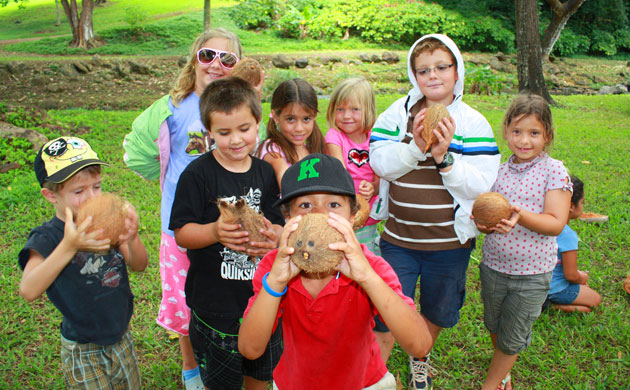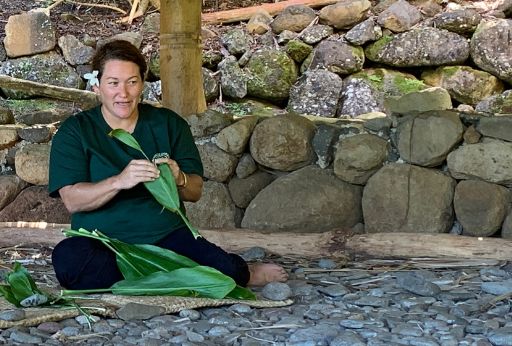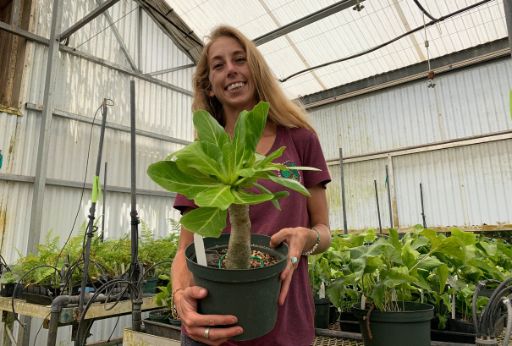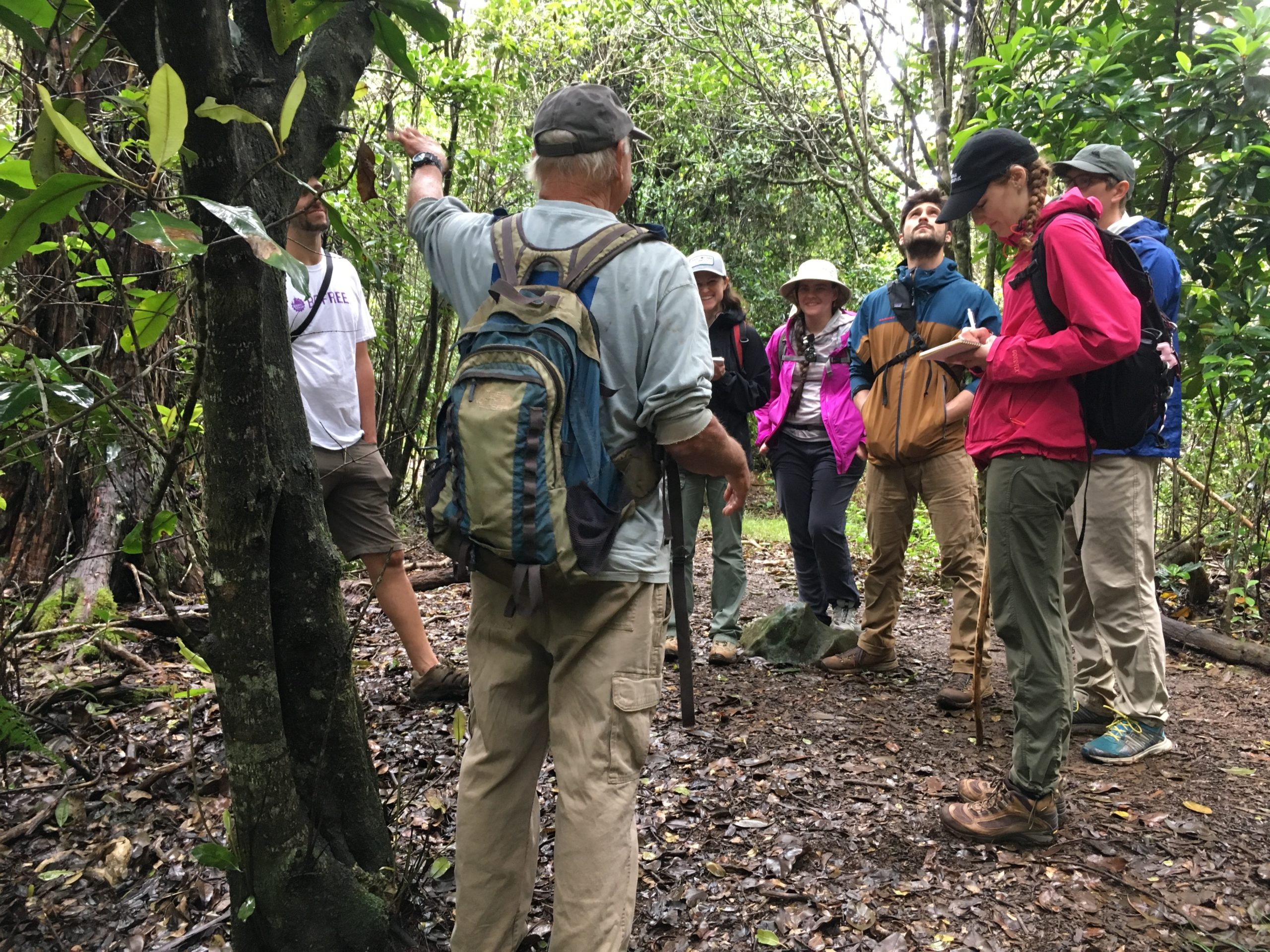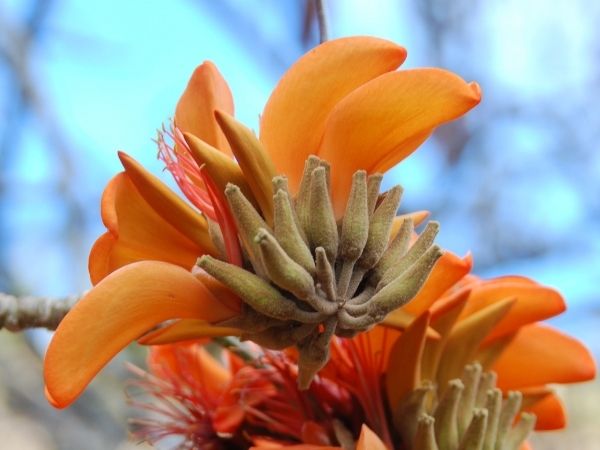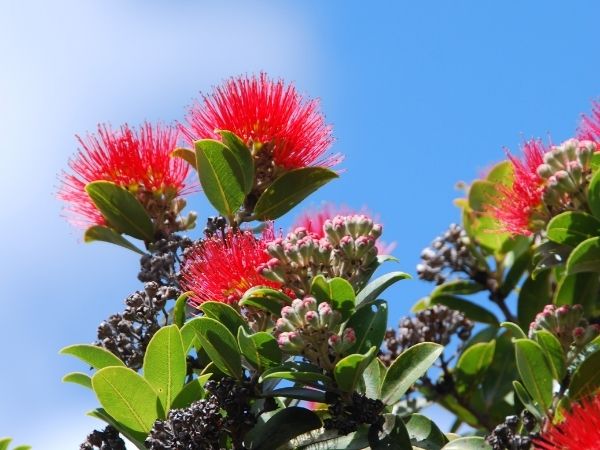Tropical Plant Database - Plant Details
Osteomeles anthyllidifolia
Click on any heading above to view more information about this plant
Conservation Status
- IUCN: Not Evaluated
- USFWS: None
Family: ROSACEAE
Genus: Osteomeles
Species: anthyllidifolia
Species Author: (Sm.) Lindl.
Vernacular: Ulei, Eluehe, Uulei
Synonyms: Pyrus anthyllidifolia
Genus: Osteomeles
Species: anthyllidifolia
Species Author: (Sm.) Lindl.
Vernacular: Ulei, Eluehe, Uulei
Synonyms: Pyrus anthyllidifolia
Osteomeles anthyllidifolia, known by the common name ‘Ulei, is a shrub with long branches that grows either spreading widely or erect reaching to 3 m tall. The leaves are alternately arranged along the branches and are compound, meaning that each leaf is divided into 15-25 leaflets. The leaflets are oblong and are small, growing only 1.5 cm long and 0.7 cm wide. The lower surface of the leaf is covered with hairs. The stalk on which the leaflets are borne is winged with a narrow strip of leaf blade remaining on either side. Clusters of three to six flowers are borne at the end of the branches. The flowers can be recognized as typical of those in the Rose family. They have five white petals (7-11 mm long) that are fused at the based to form a cup-like structure called a hypanthium, which surrounds the base of the ovary. There are many stamens, the pollen producing structures, that are inserted into the top of the hypanthium. The fruit is fleshy and white at maturity, is 1.0 cm in diameter, and contains many small, yellow seeds that are 1.5 mm in diameter.
(Wagner, W. L., Herbst, D. R., and S. H. Sohmer. 1999. Manual of the Flowering Plants of Hawai‘i. Revised Edition. Volume 2. Bishop Museum Special Publication 97. University of Hawai`i Press, Bishop Museum Press, Honolulu, Hawai’i.)
(Wagner, W. L., Herbst, D. R., and S. H. Sohmer. 1999. Manual of the Flowering Plants of Hawai‘i. Revised Edition. Volume 2. Bishop Museum Special Publication 97. University of Hawai`i Press, Bishop Museum Press, Honolulu, Hawai’i.)
The bark of ‘Ulei was traditionally used in Hawaii for its medicinal properties. The bark was pounded and mixed with ground Kukui (Aleurites moluccana) seeds, and a young unfolded Ti (Cordyline fructosa) leaf. These ingredients were boiled in water and strained and the compound was used as a enema. The young shoots and seeds of ‘Ulei were used on Mau‘i as a medicine for babies.
(Gutmanis, J. 1976. Hawaiian Herbal Medicine, Kahuna La‘au Lapa‘au. Island Heritage Publishing, Waipahu, HI.)
(Wagner, W. L., Herbst, D. R., and S. H. Sohmer. 1999. Manual of the Flowering Plants of Hawai’i. Revised Edition. Volume 1. Bishop Museum Special Publication 97. University of Hawai`i Press, Bishop Museum Press, Honolulu, Hawai’i.)
(Gutmanis, J. 1976. Hawaiian Herbal Medicine, Kahuna La‘au Lapa‘au. Island Heritage Publishing, Waipahu, HI.)
(Wagner, W. L., Herbst, D. R., and S. H. Sohmer. 1999. Manual of the Flowering Plants of Hawai’i. Revised Edition. Volume 1. Bishop Museum Special Publication 97. University of Hawai`i Press, Bishop Museum Press, Honolulu, Hawai’i.)
The thin branches of ‘Ulei were used to make the looped structures of scoop nets that were used to remove fish from larger nets or to catch crabs and freshwater shrimp in the handheld hukilau nets. The thin branches were pliable enough to bend easily and long enough to produce loops that could be lashed together with cord to form the handle of the net.
The leaflets, flowers, and fruit of ‘Ulei were traditionally used in lei wili in which materials are wound into a lei rather than strung onto cordage. This was one of the techniques that was most frequently used in ancient lei making.
(Abbott, I A. 1992. L?`au Hawai‘i: Traditional Hawaiian Uses of Plants. Bishop Museum Press, Honolulu, Hawai’i.)
The leaflets, flowers, and fruit of ‘Ulei were traditionally used in lei wili in which materials are wound into a lei rather than strung onto cordage. This was one of the techniques that was most frequently used in ancient lei making.
(Abbott, I A. 1992. L?`au Hawai‘i: Traditional Hawaiian Uses of Plants. Bishop Museum Press, Honolulu, Hawai’i.)
‘Ulei, is native to Hawaii, the Cook Islands, Tonga, Rarotonga, Pitcairn and Rapa Islands. In Hawaii it is found in a wide range of habitats including open lava fields, coastal cliffs, dry shrublands, and dry to mesic forests. It is found on all the main islands except Ni‘ihau and Kaho‘olawe at elevations between 2 and 2320 m. The genus Osteomeles contains two other species that are native to Okinawa and the Bonin Islands.
(Wagner, W. L., Herbst, D. R., and S. H. Sohmer. 1999. Manual of the Flowering Plants of Hawai‘i. Revised Edition. Volume 2. Bishop Museum Special Publication 97. University of Hawai`i Press, Bishop Museum Press, Honolulu, Hawai’i.)
(Wagner, W. L., Herbst, D. R., and S. H. Sohmer. 1999. Manual of the Flowering Plants of Hawai‘i. Revised Edition. Volume 2. Bishop Museum Special Publication 97. University of Hawai`i Press, Bishop Museum Press, Honolulu, Hawai’i.)
The name Osteomeles comes from the Greek words osteon meaning bone and melon meaning apple. The name describes the fruit of this genus, which is called a pome and is characteristic of the subfamily Pomoideae in the Rose family. All pomes have a hard inner layer in the ovary wall such as the fibers in the apple core that enclose the seeds.
- 027473 - collected by Harold St. John in 1934
- 018827 - collected by Derral Herbst in 1971
- 018831 - collected by W. M. Bush in 1976
- 066381 - collected by Art Whistler in 1982
- 018824 - collected by Tim Flynn in 1983
- 018825 - collected by Tim Flynn in 1985
- 015964 - collected by Tim Flynn in 1985
- 066380 - collected by Art Whistler in 1986
- 015965 - collected by David H. Lorence in 1987
- 015963 - collected by David H. Lorence in 1987
- 015155 - collected by Tim Flynn in 1987
- 018830 - collected by Lynwood Hume in 1987
- 018828 - collected by Lynwood Hume in 1988
- 018826 - collected by David H. Lorence in 1988
- 018829 - collected by Lynwood Hume in 1988
- 002160 - collected by Lynwood Hume in 1989
- 008042 - collected by David H. Lorence in 1991
- 016454 - collected by K. R. Wood in 1995
- 020964 - collected by K. R. Wood in 1995
- S047812 - collected by K. R. Wood in 1997
- 022577 - collected by Steve Perlman in 1998
- 043203 - collected by K. R. Wood in 2000
- 042139 - collected by Timothy J. Motley in 2002
- 042050 - collected by Timothy J. Motley in 2002
- 042031 - collected by Timothy J. Motley in 2002
- 051927 - collected by K. R. Wood in 2002
- 057137 - collected by K. R. Wood in 2002
- 043243 - collected by Natalia Tangalin in 2004
- 048788 - collected by K. R. Wood in 2005
- 046043 - collected by K. R. Wood in 2005
- 055129 - collected by K. R. Wood in 2005
- 055055 - collected by K. R. Wood in 2005
- 061811 - collected by K. R. Wood in 2006
- 046940 - collected by Clay Trauernicht in 2007
- 056098 - collected by Natalia Tangalin in 2007
- 059912 - collected by Paul Massey in 2008
- 047589 - collected by K. R. Wood in 2008
- 061112 - collected by Danial Harris-Pascal in 2008
- 095428 - collected by William Feeter in 2010
- 072823 - collected by Natalia Tangalin in 2011
- 061237 - collected by Natalia Tangalin in 2011
- 095266 - collected by Natalia Tangalin in 2015
- 083427 - collected by Seana Walsh in 2020
- 086907 - collected by K. R. Wood in 2021
- 087425 - collected by Tim Flynn in 2021
We currently have 45 herbarium specimens for Osteomeles anthyllidifolia in our collection. Click on any specimen below to view the herbarium sheet data.
.svg)



